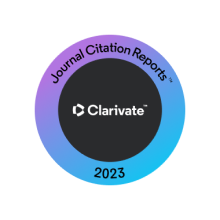Abstract
Background: Cardiovascular disease (CVD) remains the leading cause of death and disability globally. In Saudi Arabia, the burden of CVD is exceptionally high, with age-standardized mortality and prevalence rates that far exceed global averages. The current CVD risk prediction tools have several limitations, and those classified as low to intermediate risk still experience cardiovascular events, underscoring the urgent need to address CVD through effective screening and prevention strategies.
Methods: A panel of Saudi experts reviewed evidence on the use of high-sensitivity cardiac troponin (hs-cTn) to enhance cardiovascular risk assessment among seemingly healthy individuals. Consensus recommendations tailored to the Saudi context were formulated based on the literature and local clinical practice, taking into consideration the characteristics of the Saudi population, local healthcare system, available resources and medical expertise.
Results and conclusions: Cardiac troponins are biomarkers of myocardial injury that can be detected in most seemingly healthy individuals using high-sensitivity assays. Studies have shown that measuring hs-cTn is a reliable predictor of future cardiovascular events in the general population. Consequently, incorporating hs-cTn into cardiovascular risk assessments could significantly improve the accuracy and effectiveness of existing risk stratification models. The experts highlighted the additional benefits of this approach compared to current risk assessment methods. This document aims to guide the integration of hs-cTn into cardiovascular risk assessment and prevention strategies for seemingly healthy individuals.
Recommended Citation
AlHabeeb, Waleed; Kinsara, Abdulhalim Jamal; Alnouri, Fahad; Alamri, Hussein; Alshammeri, Owayed; Albacker, Turki; Faraidy, Khalid Al; AlKashkari, Wail ,; AlSaif, Shukri; Balghith, Mohammed; and Borai, Anwar Abdullah
(2025)
"Saudi Heart Association Position Statement on Troponin Use for Cardiovascular Risk Screening in Asymptomatic Populations,"
Journal of the Saudi Heart Association: Vol. 37
:
Iss.
3
, Article 10.
Available at: https://doi.org/10.37616/2212-5043.1444
Creative Commons License

This work is licensed under a Creative Commons Attribution-Noncommercial-No Derivative Works 4.0 License.




